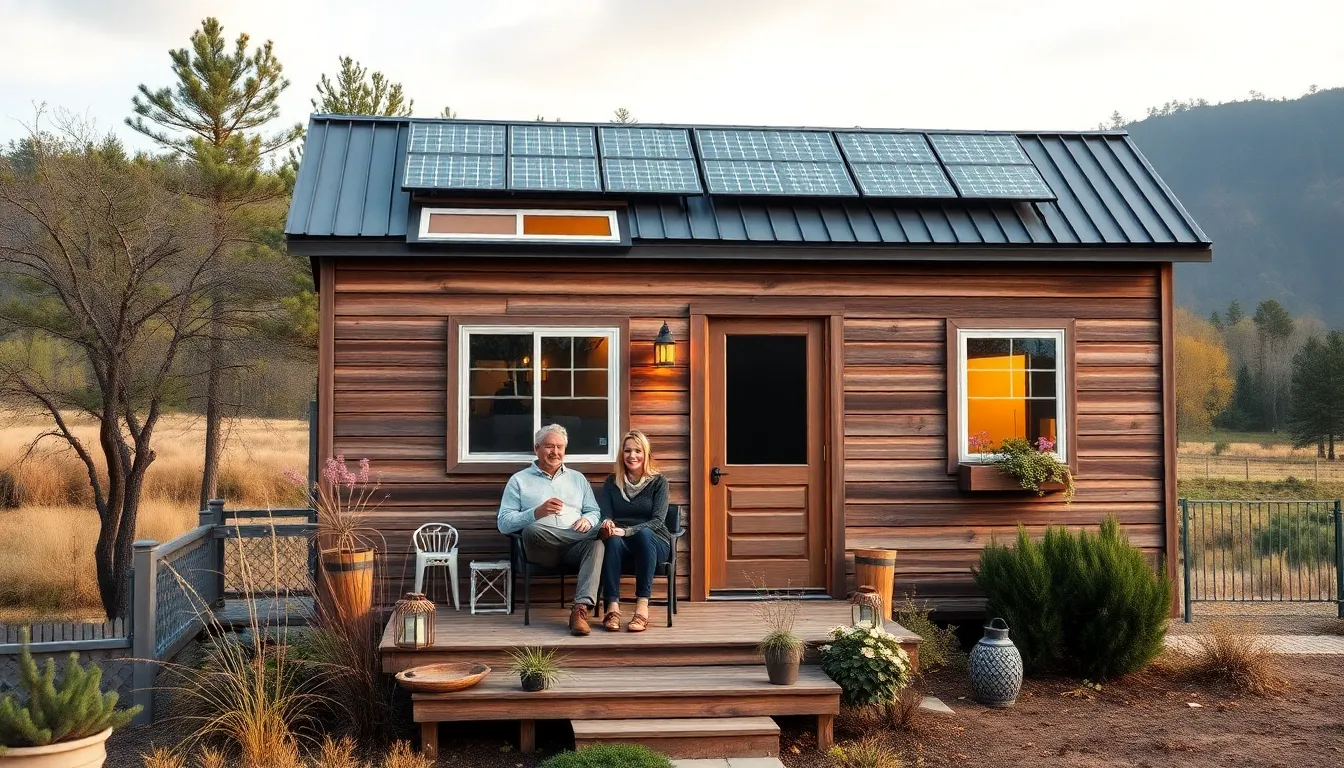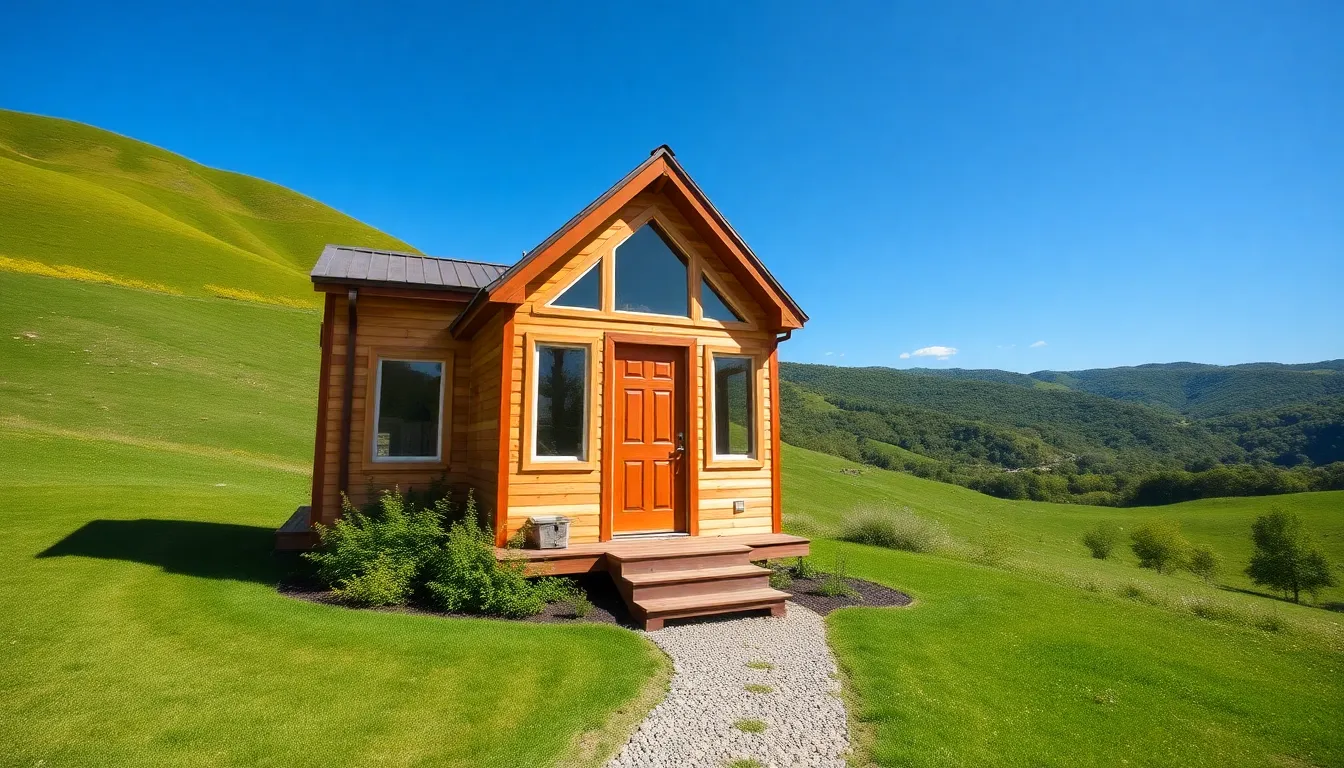In a world where bigger often means better, the tiny house movement is flipping that notion on its head—one compact square foot at a time. Imagine living in a cozy space that’s not only budget-friendly but also eco-conscious and stylish. A budget tiny house isn’t just a trend; it’s a lifestyle choice that offers freedom from the chains of traditional home ownership.
Picture this: no more mortgage stress, no more endless cleaning, and a life filled with adventures rather than clutter. With a budget tiny house, you get to embrace minimalism without sacrificing comfort. Whether you’re a free spirit looking to downsize or a savvy investor seeking a smart financial move, tiny living might just be the perfect fit. So, let’s dive into the world of budget tiny houses and discover how they can turn your dreams of simple living into a delightful reality.
Table of Contents
ToggleOverview of Budget Tiny Houses
Budget tiny houses embody an innovative approach to living. These compact homes cost significantly less than traditional houses, often priced between $10,000 to $40,000. Many people choose to build their own budget tiny houses, allowing for customization while controlling expenses.
Eco-friendly materials commonly used in these homes contribute to sustainability. Features such as energy-efficient appliances and solar panels enhance their appeal. Living in a budget tiny house often leads to lower utility costs and reduced environmental impact.
Flexibility defines the budget tiny house lifestyle. Owners can relocate their homes, providing a sense of adventure and freedom. Minimalist living also promotes decluttering, simplifying life by focusing on essentials.
Investors recognize the potential for rental income through budget tiny houses. Many individuals opt to use their tiny homes as vacation rentals, attracting tourists seeking unique experiences. The growing demand for budget-friendly accommodations makes this option financially rewarding.
Communities dedicated to tiny houses are emerging nationwide. These neighborhoods foster a sense of belonging among residents committed to sustainable living. Many local governments actively support the development of tiny house communities, reducing zoning barriers.
Overall, budget tiny houses represent a practical, affordable solution for those seeking freedom from financial burdens and a simpler lifestyle.
Benefits of Living in a Budget Tiny House
Living in a budget tiny house offers multiple advantages that enhance both quality of life and financial well-being. These homes promote a unique lifestyle focused on simplicity and sustainability.
Financial Freedom
Financial freedom emerges as a primary benefit of budget tiny house living. Budget tiny houses typically cost between $10,000 and $40,000, making them significantly more affordable than traditional homes. Lower mortgage payments or the possibility of buying a house outright leads to reduced financial stress. Utility bills decrease as these homes use energy-efficient designs and eco-friendly materials. Savings on upkeep and maintenance contribute to overall financial health. With fewer expenses, homeowners often find they can allocate resources toward experiences and personal interests.
Minimalist Lifestyle
A minimalist lifestyle arises naturally in budget tiny houses. These homes encourage homeowners to prioritize essential items while letting go of unnecessary clutter. Living in smaller spaces fosters creativity in organization and design, making each square foot meaningful. Room for personal expression persists, even within compact layouts. Emphasis on quality over quantity guides decisions on furniture and decor, promoting sustainable consumption. This lifestyle often results in improved mental clarity and reduced stress, creating an environment where simplicity thrives.
Key Considerations When Choosing a Budget Tiny House
Selecting a budget tiny house involves careful thought around several essential factors. These considerations ensure a successful transition to a compact living space.
Location and Zoning Laws
Location impacts both lifestyle and legality. Local zoning laws dictate where tiny houses can be situated, so understanding regulations is crucial. Some areas allow tiny homes on wheels while others may require foundation placement. Researching local ordinances helps in avoiding potential issues. Proximity to amenities like grocery stores and healthcare influences the overall living experience. Selecting a location with supportive tiny house communities fosters a sense of belonging and provides shared resources.
Size and Layout
The size and layout of a tiny house dictate functionality. Most budget tiny houses range from 100 to 400 square feet. Evaluating personal needs ensures the space fits daily activities comfortably. Open floor plans enhance versatility and make the home feel larger. Must-have features like a kitchenette, bathroom, and sleeping area should be prioritized during the design phase. Customizing layouts can maximize space efficiency while promoting organization. Balancing size with comfort leads to an enjoyable tiny living experience.
Designing Your Budget Tiny House
Designing a budget tiny house combines creativity with practicality. Homeowners must prioritize efficiency and functionality while staying within financial limits.
Smart Space Utilization
Maximizing space defines successful tiny home design. Multi-purpose furniture, such as sofa beds and foldable tables, enhances utility in smaller areas. Vertical storage solutions also play a critical role, taking advantage of walls and ceilings while minimizing floor space usage. Incorporating built-in shelves allows for organized storage without sacrificing style. Opting for an open floor plan simplifies movement and fosters a sense of spaciousness, making tiny living feel comfortable. Selecting a few essential items keeps clutter at bay, adding to the overall aesthetic. Creating designated zones within the home, like a cozy reading nook or a compact kitchen, promotes both functionality and comfort.
Cost-Effective Materials
Choosing the right materials significantly affects budget alignment. Sustainable products like reclaimed wood and bamboo lower costs while promoting eco-friendliness. Utilizing energy-efficient appliances also reduces utility expenses long-term. Affordable insulation options, such as spray foam or recycled cellulose, enhance energy efficiency, leading to lower heating and cooling costs. Implementing DIY techniques can save money while allowing for personal expression in design. Prioritizing local materials supports community businesses and minimizes transportation costs. Homeowners should balance aesthetics with affordability, ensuring the tiny house reflects individual style without exceeding the budget.
Popular Budget Tiny House Models
Many individuals explore various models when considering budget tiny houses.
- Tumbleweed Tiny House Company: Tumbleweed offers a range of models priced between $30,000 to $40,000. These homes, averaging 200 to 300 square feet, feature customizable layouts and eco-friendly designs. With options including the Cypress and the Elm, buyers can select models that best fit their needs.
- Tiny Heirloom: Tiny Heirloom specializes in luxury tiny homes with prices starting around $59,000. Despite this higher range, the quality and craftsmanship observed in models like the “Modern Tiny House” provide lasting value. The homes highlight multi-functional spaces designed for comfort and efficiency.
- Minttiny: Minttiny provides budget-friendly options starting as low as $10,000. Their models typically measure around 120 square feet, making them ideal for minimalists. The builds emphasize simple designs and quick assembly through DIY methods, appealing to those eager to take on construction.
- Escape Tiny Homes: Escape offers models like the “Traveler” for approximately $30,000 to $40,000.
Featuring an open-concept design, these homes range from 170 to 300 square feet. The convenient loft area adds a unique charm to the customizable dwelling spaces.
- iTiny: iTiny’s models begin at about $20,000, providing various layouts and styles. Each tiny house generally incorporates energy-efficient materials, helping reduce utility costs associated with home ownership. The flexible design allows for individual preferences while maintaining budget constraints.
These popular budget tiny house models enable prospective homeowners to embrace simplified living without compromising quality and style.
Conclusion
Budget tiny houses offer an innovative solution for those seeking a simpler and more fulfilling lifestyle. They combine affordability with sustainability while promoting minimalism and personal expression. By embracing this lifestyle, individuals can experience financial freedom and reduced stress, all while enjoying the benefits of eco-friendly living.
The flexibility and creativity inherent in tiny house design allow homeowners to create spaces that truly reflect their values and needs. With a variety of models available, there’s a budget tiny house for everyone. As the tiny house movement continues to grow, it paves the way for a community that values simplicity, sustainability, and connection.







